1974 marked the beginning of the final two seasons for California Golden Seals hockey. The NHL took over ownership of the struggling franchise in January of that year. Much would change for the team from that point forward, including their eventual relocation.
The club adopted new colors heading in 1974. The Seals switched from their more widely used forest green and “golden” yellow color scheme, to what has since for many become the more popular turquoise and gold. Eventually they would even garner new ownership from San Francisco hotel owner Mel Swig mid-season.
We know now that the steps the Seals took to improve their team culture and performance would fall short. The team would ultimately move east and become the Cleveland Barons beginning in 1976-77, before disbanding entirely after just two seasons.
But in the late-spring of 1974, there was still hope and thoughts of a fresh start. Heck, even the new colors the Seals chose were fresher and (perhaps) unintentionally significant of a new beginning.
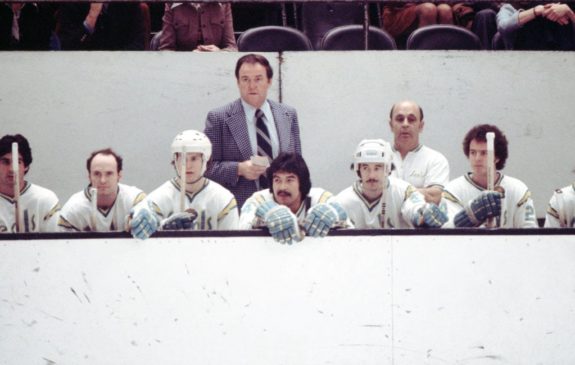
One way that a hockey club can always breathe in new life is through the NHL Draft. When 1974’s NHL Amateur Draft was held in Montreal, Quebec, the Seals appeared to do quite well. They selected nine total players, including two 1st-rounders. Five of the nine would have NHL careers, and three would debut for the Seals that same season.
Ultimately though, the new faces were not enough to right the ship.
THW looks back at the nine different players that California drafted in 1974. We will delve into each of the Seals’ selections, and how they ultimately panned out during their time with the organization and beyond.
The Composition of the Seals at the Time
To have a better understanding of California’s draft picks we have to first take a look at how the team was already comprised. This will help to explain why they selected who they did.
Prior to the draft taking place, the 1973-74 Golden Seals had just finished dead last in the NHL with an abysmal 13-55-10 record. Those mere 36 points were the worst performance by the club in its entire 9-year history. The 342 goals they allowed were also a franchise worst.
Things were not about to get any better. The Seals were in the process of being added to the newly formed Adams Division for the 1974-75 season, which also included the powerful Boston Bruins and Buffalo Sabres, as well as the Toronto Maple Leafs.
All that being said, California still had a number of bright spots on their roster – namely their goaltender.
Netminder Gilles Meloche played 18 seasons in the NHL and won 270 games. Had he played for a team like the Montreal Canadiens or Boston Bruins, he likely would have won at least one Stanley Cup as a player (he eventually won a few as a Pittsburgh Penguins staff member well after he had retired).
As it turned out, Meloche is arguably the best player in NHL history to have never been part of a legitimate contender. Meloche always kept the Seals’ win-loss record from being much worse, and was the NHL’s leader in shots against, saves and minutes played during California’s 1972-73 campaign.
Therefore, goaltending was not really a need for the Seals’ scouting staff in 1974.
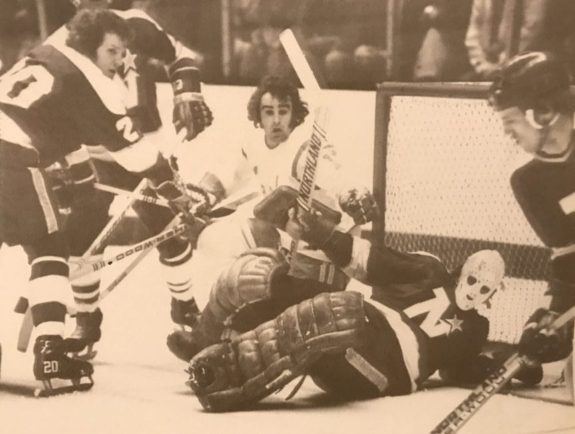
Forward Joey Johnston led the 1973-74 Seals in goals (27), assists (40) and points (67). He completed his second straight 25-plus goal season for the Seals, and was slated to be their most quintessential scorer heading into 1974-75. As crazy as it might be to think, Johnston was the only one of the Seals’ four 20-plus scorers from the ’73-’74 squad to remain with team the next season.
Obviously this meant that California would need to acquire some offense that could contribute right from the get-go.
But they also very much needed defense. Of the seven blueliners who suited up for the Seals in 1973-74, only three would return the next season – Ted McAneeley, Bob Stewart and Terry Murray. Of those three, neither McAneeley nor Murray would even play 10 games in ’74-’75. A major overhaul needed to happen to California’s back end.
In turn, for the nine selections the Seals made at the ’74 draft, four were D-men and four were forwards. Of the four forwards, one was deemed to have a highly potent scoring touch that just never materialized at the NHL level, while one of the blueliners was slated to be another star in the making.
Here are the players that the Seals ended up selecting:
Rick Hampton (First Round, 3rd Overall)
Rick Hampton was a highly-touted defender who would eventually move up to left wing. When the Seals selected him though, the notion was that if Hampton was not another Bobby Orr or a Brad Park, then he would at least be the Seals version of an Ian Turnbull or a Pat Stapleton.
Unfortunately, while Hampton was a decent player in his own right, he was not the top-2 defenseman that the Seals had projected him to be. That was despite him going 25-25-50 for scoring in 65 games for the St. Catharines Black Hawks in his final year of OHA junior hockey.
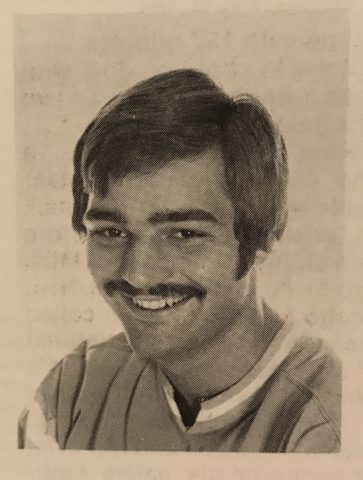
Hampton would immediately suit up for California. He would play in 78 of the club’s 80 regular season games in 1974-75, and was their leading scorer among blueliners (8-17-25). Hampton’s numbers would be even better in his sophomore campaign with the Seals. He would set career highs in assists (37) and points (51) in 73 games. Those 51 points are a Seals’ team record for a defenseman.
Hampton remained with the club for its’ two seasons as the Barons once they relocated. Playing more so as a forward, he would put forth 16 and 18 goals for both go-rounds in Cleveland. Following that though, Hampton’s stock eventually dropped, as he never became an elite talent at either the forward or defense position.
He would wrap up his NHL playing time with the Los Angeles Kings, beginning in 1978-79. However, in two seasons Hampton only played 52 regular season games for L.A.
He would finish his playing career with two seasons in the minors and one in Switzerland. Hampton retired from playing after 21 games with the Rochester Americans in 1983-84.
Ron Chipperfield (First Round, 17th Overall)
Ron Chipperfield had an great hockey career, but just not in the NHL. When the Seals selected him in the back-half of the opening round, there was every reason to believe that he would be a star talent.
Chipperfield scored a staggering 90 goals, 72 assists and 162 points in only 66 games for the 1973-74 Brandon Wheat Kings in junior. This won him WCHL scoring title and MVP award, and his 90 tallies were the league’s goal record at the time. This also marked Chipperfield’s third straight 100-point season for the Wheat Kings.
The rival WHA’s Vancouver Blazers also drafted the talented centerman at the same time as the Seals. Chipperfield – like many of his contemporaries – opted to go the WHA route. He would join the Blazers for the 1974-75 season, and relocated with them when the club became the Calgary Cowboys.
Chipperfield signed with the WHA’s Edmonton Oilers in 1977-78 as a free agent following the folding of the Cowboys. There he would end up being teammates with eventual original NHL Oilers’ “Cowboy” Bill Flett, Blair MacDonald, Dave Semenko, Brett Callighen, and of course, “The Great One” Wayne Gretzky.
Most forget that once the Oilers joined the NHL in 1979-80, Chipperfield was the team’s original team captain. But on Mar. 11, 1980, Edmonton traded him to the Quebec Nordiques in exchange for goaltender Ron Low. Chipperfield would pass the 20-goal plateau with the Nordiques following the trade, but played a mere four games in 1980-81.
He would take his game to Italy where he would score 175 goals, 132 assists and 307 points in only 84 games for HC Bolzano from 1981-82 through 1983-84. Chipperfield helped Bolzano to three straight Italian championships, and would end up head coach of the team from 1984-85 through 1987-88.
Bruce Affleck (Second Round, 21st Overall)
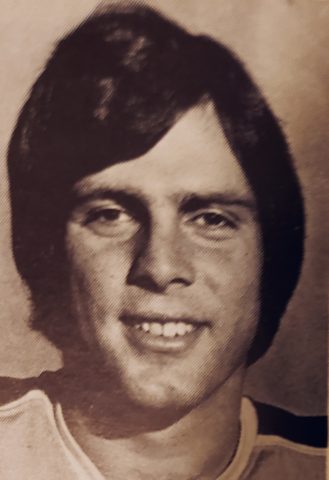
Bruce Affleck’s time with the Seals organization was very short-lived, but he would end up having both a decent playing career and a solid executive role with the St. Louis Blues.
The 6-foot, 190-pound defender would begin his professional career with the Seals’ CHL minor league affiliate the Salt Lake Golden Eagles. Affleck generated 14 assists in 35 games for the club, but would end up being traded from the Seals to the Blues on Jan. 1, 1975 in exchange for hulking forward Frank Spring and cash.
Spring would end up debuting for the Seals following the trade, and Affleck would do the same in St. Louis. The Blues certainly received the better end of the deal though, as Affleck would become a mainstay on their blue line for the next three seasons
After stops as a player with the Vancouver Canucks, New York Islanders, Swiss teams, and numerous minor league teams, Affleck retired following the 1983-84 season. He would eventually return to the Blues as a member of their sales staff.
Working diligently with the organization for many years, Affleck is currently the Blues’ Executive Vice President – a role he has held since Jun. 16, 2014.
Charlie Simmer (Third Round, 39th Overall)
Standing an imposing 6-foot-3 and at 210 pounds, forward Charlie Simmer was a much larger forward than most of his contemporaries. Of any of the players that the Seals selected in 1974, Simmer ended up having the most star power. This, however, would not come to fruition until after he had departed from the Seals/Barons organization.
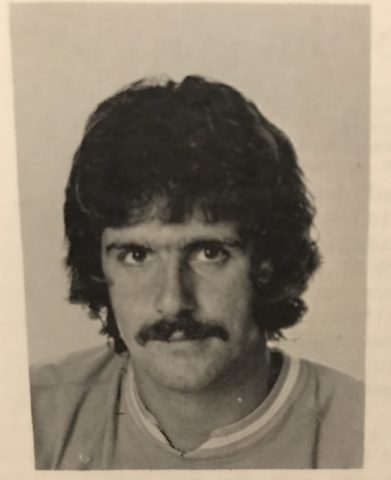
California selected Simmer following a season of scoring 45-54-99 in 70 games for the Sault Ste. Marie Greyhounds (OHA). He would make his NHL debut in late-December 1974. Playing against the Boston Bruins on Dec. 27, Simmer scored a goal and an assist in his very first game for the Seals.
He would split both the 1974-75 and 1975-76 seasons between the Seals and the Salt Lake Golden Eagles. In 56 total games for California, Simmer would end up scoring nine goals, 14 assists and 23 points.
The sizable winger remained with the organization when they relocated to Cleveland, but scored just a pair of goals in 24 games in 1976-77. What would bring about Simmer’s breakthrough was his signing as a free agent with the Los Angeles Kings on Aug. 8, 1977.
With the Kings, Simmer would eventually be partnered with center Marcel Dionne and right wing Dave Taylor to form one the greatest lines in hockey history, “The Triple Crown Line”. Simmer would score back-to-back seasons of 56 goals in 1979-80 and 1980-81. That same 1980-81, Simmer, Dionne and Taylor would become the first forward line in NHL history to have all three of its members surpass 100 points in a season.
By the time his NHL career came to a close after the 1987-88 season, Simmer was almost exactly a point-per-game player (342-369-711 in 712 games). With a Bill Masterton Trophy and two First All-Star Team selections to his credit, he is also the only player from the 1974 Seals’ draft class that has the numbers and the accolades that make for Hall of Famer discussion, though certainly not a shoo-in.
Tom Price (Fourth Round, 57th Overall)
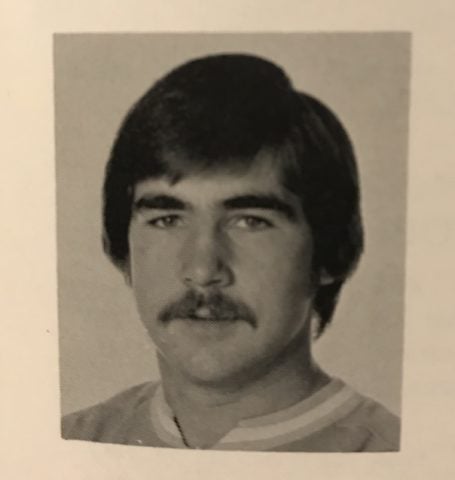
4th-rounder Tom Price was the only other Seals selection to have an NHL career. The 6-foot-1, 190-pound defender came from Toronto, Ontario, and played his junior hockey in the OHA for both the London Knights and the Ottawa 67s.
The Seals would insert Price into their lineup in late November of 1974. His 3-game stint would include a pair of games against divisional rivals the Boston Bruins, and one against the Minnesota North Stars. Price would go pointless in the three appearances, and ended up spending the majority of the season in Salt Lake.
He would make five more appearances in a Seals uniform during the 1975-76 season. The club called him up from Salt Lake for a string of games that February. Once again Price would not be a factor on the scoresheet, and came away as a minus-9.
Like Hampton and Simmer, he would remain with the organization when the team relocated to Cleveland. Price would make just two appearances for the Barons in 1976-77, and would be released by the team on Feb. 17, 1977. Nine days later he would be signed by the Pittsburgh Penguins with whom he would record his first and only NHL points – a pair of assists that same season after joining his new team.
Jim Warden (Fifth Round, 75th Overall)
Goaltender Jim Warden was the only netminder that the Seals selected in 1974. An American from Detroit, Michigan, he had been a standout for Michigan Tech.
Not immediately making a jump to the professional game, Warden remained at Michigan Tech for another season after he was drafted. Doing so enabled him to become a 1975 NCAA champion, and be named the Most Valuable Player while winning the national title.
A big goaltender for his generation, Warden stood 6-foot-3 and was just shy of 200 pounds. While he would eventually have a professional career in the CHL for the Salt Lake Golden Eagles, Phoenix Roadrunners, and Oklahoma City Stars, his main claim to fame was his time spent with the U.S. Men’s National Team.
Warden backstopped Team USA at the 1976 Winter Olympics in Innsbruck, Austria. He played in all five games for the Americans who finished fifth at the tournament. Some of Warden’s teammates included future NHLers Steve Jensen, Bob Miller and Dan Bolduc, as well as “Miracle on Ice” member Buzz Schneider.
Warden never played an NHL game, but is still well-regarded for his Olympic performance.
Tom Sundberg (Sixth Round, 93rd Overall)
Left-winger Tom Sundberg was another American-born player selected by the Seals. At 6-foot-2 and just shy of 200 pounds, the St. Paul native played his college hockey at the University of Minnesota. Like Warden, one of Sundberg’s teammates was Buzz Schneider.
Sundberg would take up pro hockey after the Seals drafted him. Unfortunately, his career was not a particularly lengthy one and he never made an NHL roster. Furthermore, he fell victim to some of Seals’ owner Swig’s mismanagement of players’ contracts.
Sundberg played parts of four seasons for the Golden Eagles in CHL, splitting the first two of which with the IHL’s Toledo Goaldiggers. He would be done playing professional hockey after the 1977-78 season.
Tom Anderson (Seventh Round, 111th Overall)
Another St. Paul, Minnesotan was taken with the Seals very next pick. Talented defender Tom Anderson possessed a scoring touch and was capable of moving the puck well. This selection by the Seals seemed to be a nice stab at a player who could potentially be a “diamond in the rough” – especially at this late in the draft.
Anderson opted not to go the professional route after being selected. Instead, he would finish up his collegiate career at Minnesota State University (Mankato). There he captained the Mavericks during his senior 1976-77 NCAA season.
Anderson would go pro in 1977-78, but his professional career would be the briefest of any of the nine draft picks. He would play a mere 12 games for the Phoenix Roadrunners that season before calling it a career.
Jim McCabe (Eighth Round, 128th Overall)
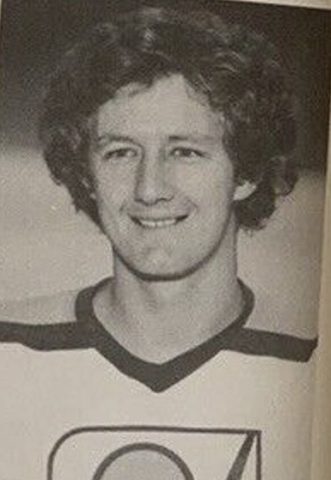
Jim McCabe ended up having a highly successful professional career in the IHL for the Toledo Goaldiggers. With the exception of one lone game for the AHL’s Maine Mariners in his final season, McCabe played his entire pro career for Toledo.
California took a shot when they made him their final selection of the draft. McCabe was the second-leading scorer for the 1973-74 Welland Sabres of the old Southern Ontario Junior Hockey League (SOJHL). With 46 goals, 69 assists and 115 points in just 59 games, it made sense for the Seals to at least give the center a try.
Though he never cracked an NHL roster, he would assemble a fine professional career just the same.
McCabe immediately joined the Goaldiggers in the autumn following the 1974 Draft. He scored at least 20 goals in each of his six IHL seasons. McCabe led Toledo in goals in 1978-79 with 40 goals in 79 games, while also performing double-duty as an assistant coach.
Most importantly, McCabe helped the Goaldiggers win the Turner Cup championship in both 1974-75 and 1977-78. He had compiled 169 goals, 236 assists, and 405 points in 429 IHL games.
Afterthoughts…
The Golden Seals did not do terrible with their 1974 draft selections. We will score them around a B-/C+ for their efforts – a passing score, but nothing spectacular. The lackluster performances by some of these picks stems more so from a poor use of assets. For example, the Seals’ organization severed ties with the likes Simmer, Affleck and perhaps Sundberg far too soon.
Hindsight is always 20/20, but what truly hurts in retrospect is the selection of Hampton at third overall and Chipperfield at 17th. The players who the Seals could have selected instead included Hockey Hall of Famers Clark Gillies (4th), Bryan Trottier (22nd), and Mark Howe (25th), as well as 50-goal scorers Pierre Larouche (8th), Guy Chouinard (28th), and Danny Gare (29th).
Any of those aforementioned players could have conceivably turned the California’s fortunes around. With the picks available to them to do so, just imagine if the Seals had selected Bryan Trottier and Danny Gare, instead of Rick Hampton and Ron Chipperfield. But alas…